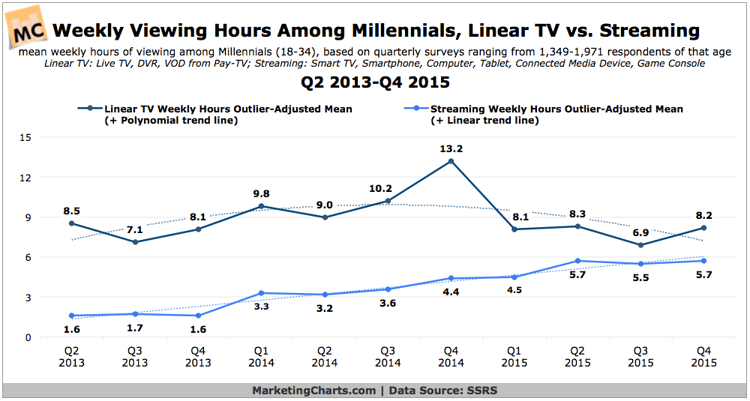

5 Digital Bites b/f Breakfast: Game of Thrones, Augmented Reality, & More


Winter is here.
The long-awaited Game of Thrones season six finally graced the small screen about a week ago. We (yep, several hardcore Game of Thrones fans here at Construct Digital!) are thrilled to see how this season would diverge from the novels.
In the spirit of all things #GoT, this week’s 5 Digital Bites features a network analysis of Game of Thrones character relationships. You’re welcome!
More from digital land: How to use Augmented Reality in your marketing; What 5 years of TV data can tell us about youth TV viewership; How to manage complexity in product design; and How to invite readers to your content.
1) Network Science Meets Game of Thrones

We’re now six TV seasons and five novels into the Game of Thrones series. Hundreds of characters have come and gone. With so many people to keep track of, it can be mind-boggling to grasp the complex dynamics among them.
Enter network science.
Beveridge and Shan did a network analysis of the third novel to understand the intricate character relationships and their bearings on how the saga would pan out. Here’s their conclusion on who are the characters of high network importance (i.e. truly influential):
-
Jon: Connections with key communities
-
Tyrion: The heart of the political machinations
-
Sansa: Pawn in various high profile power plays
-
Robert: His memory reunifies much of the sprawling, crumbling network
-
Daenerys: The prospect of her return will disrupt the current network
There’s an important takeaway from knowing your importance within a web of networks – with enough cunning, you could parlay your network importance to create dramatic effects.
>> Originally from Mathematical Association of America
Image source: Onigirikittyyy
Shared by Chng Nai Yun, Digital Producer
2) How to Make Augmented Reality Work for Your Marketing

Augmented Reality (AR) has the potential to influence various consumer experiences. But how can marketers seamlessly incorporate AR into their marketing campaigns? According to Harvard Business Review:
Marketers should remember that AR is not about creating a completely new reality; it’s about enhancing what already exists.”
So, don’t just slap virtual elements onto physical experiences. That’s just gimmicky. Marketers should consider the context in which consumers learn about a product. Then use AR to add value to specific consumer experiences (e.g. finding new products and deciding what to buy).
>> Originally from Harvard Business Review
Image source: Harvard Business Review
Shared by Wan Ying Yi, Content Marketer
3) Are Youths Watching Less TV? What Five Years of TV Data Show

The folks at MarketingCharts crunched five years of Americans’ traditional TV viewing data from Nielsen to glean insights on TV viewership among youths. They found that youth as a whole do indeed watch less traditional TV.
No major surprise there. So, where are youths getting their The Walking Dead fixes from?
Interestingly, Nielsen’s figures do not show a major shift in viewing time from traditional TV to mobile devices. But they do show that TV-connected devices are getting popular. In Q3 2015, 18- to 34-year-old users of TV-connected devices averaged 3.3 days per week on them. On the other hand, during the same period, the adult average was 2.9 days per week.
>> Originally from MarketingCharts
Image source: MarketingCharts
Shared by Dave Teo, Project Manager
4) Designing Complex Products: Thoughts on Managing Complexity

As designers, we are responsible for educating the team and clients on the right design approach for each project. But in truth, it’s hard to overcome obstacles – such as complexity. And when it fails, the only person to blame is myself.”– Kendrick Leow, Digital Designer at Construct Digital
Complexity comes in many forms.
Sometimes, there might be too many people involved. A product might have too many features. There might be obfuscated and uncommunicated destinations and checkpoints (much like the preceding phrase). Whatever their causes, complexity often buggers projects to a standstill.
So how can we deal with these complexities? Manage the people involved and manage the design process.
How? Read the article, folks.
>> Originally from Medium (Truthlabs)
Image source: Medium (Truthlabs)
Shared by Kendrick Leow, Digital Designer
5) Three Tips for Inviting Someone to Your Content

Shana Pilewski wrote about proper hosting etiquette to elicit engagement with readers. We like how she relates such engagements to the psychology of meeting someone, where it’s all about first impressions!
Key takeaways when inviting people to your content:
-
Always welcome the reader to your content
No clickbait- y titles. Be upfront about what your content will accomplish -
Host readers with the right engagement techniques
E.g. clear and defined headers, citing relevant research, easy-to-read structure -
Send readers off with proper recap
Reiterate key takeaway points. You can also ask readers a final question to engage with them
P.S. A great read for a Thoughtful Tuesday!
>> Originally from Outbrain
Image source: Outbrain
Shared by Paolo Luna, Digital Marketer
Want more digital news? Check out the rest of our 5 Digital Bites b/f Breakfast series!
Image Credits & Sources
Header image by Alejandro Escamilla @ Unpsplash
More insights